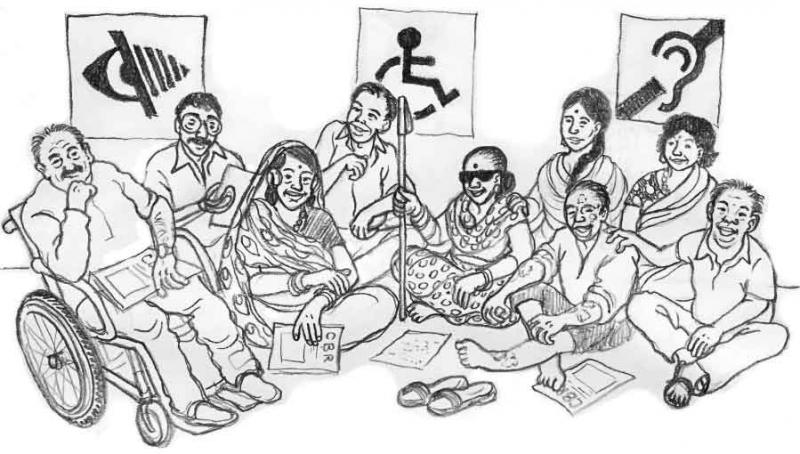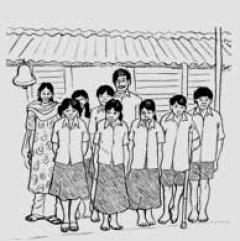Your progress
0%
complete
CBR is a strategy that applies equally to people affected by leprosy.
The suggested activities that follow provide practical ideas on ways of including people affected by leprosy in CBR and in the wider community.
Our aim is also to raise the awareness of people working in leprosy services about the importance of including people with other disabilities in their activities.

Learn about how a boy’s life, affected by leprosy, was changed as a result of a CBR.


Shivrao lives in a small village in the Mandya sub-district in Karnataka state in the south of India. Three of his family members had leprosy and experienced disabilities as a result. In 1999, when he was 15 years old, he developed a round red mark on his face. Ambuja, a leprosy worker from the Maria Olivia Bonaldo (MOB) rural health programme, visited Shivrao’s house one day and noticed this mark. She suspected that it was due to leprosy and therefore took him to the Mandya Civil Hospital where he was diagnosed and started on treatment. Somehow the news that Shivrao was receiving treatment for leprosy reached his school, and his teachers told him that he should no longer attend.
When Ambuja carried out a follow-up visit to Shivrao’s home, she found out what had happened and decided to talk to his schoolteachers. She explained to them that Shivrao was receiving treatment and that there was no risk of infection to the other children. She asked them to allow Shivrao to come back to school. However, his teachers were not convinced and asked for a certificate from the hospital. Ambuja went with Shivrao to the Civil Hospital and got this certificate from a doctor, and finally Shivrao was allowed to go back to school.
In 2001, the MOB rural health programme decided to start CBR, and Ambuja was trained as one of the first CBR workers. After her training, Ambuja decided to start a self-help group for people with disabilities. She went to Shivrao’s house to ask if one family member would like to join the group. Shivrao’s family was afraid of joining the self-help group because they thought that they would not be accepted by others. However, after many discussions, Shivrao’s mother decided to go along to the self-help group meetings. She joined the savings activity, where each member saved a small sum of money every week.
Ambuja continued to provide regular follow-up for Shivrao. She gave advice to Shivrao about taking good care of his feet, because she discovered that his feet had become numb because of the leprosy. She also gave him a pair of sandals from the Leprosy Programme to protect his feet from becoming damaged. In 2003, Shivrao decided to join the local CBR as a CBR worker. His experience in that job has given him a lot of confidence, and he has learnt more about the different opportunities available for people with disabilities. He went on to study at university through distance learning. Today he is a schoolteacher, is married and has a baby girl. He also continues to be an active supporter of CBR in his village.